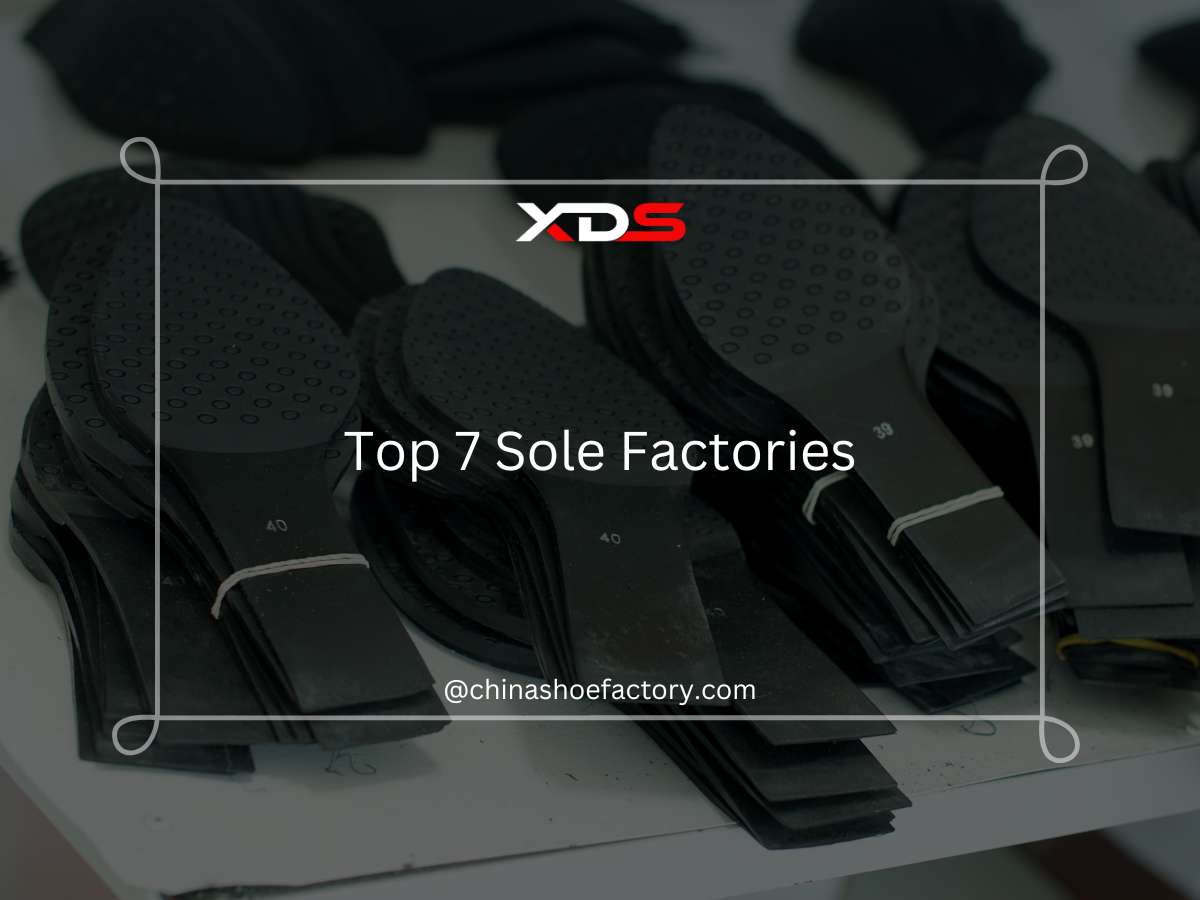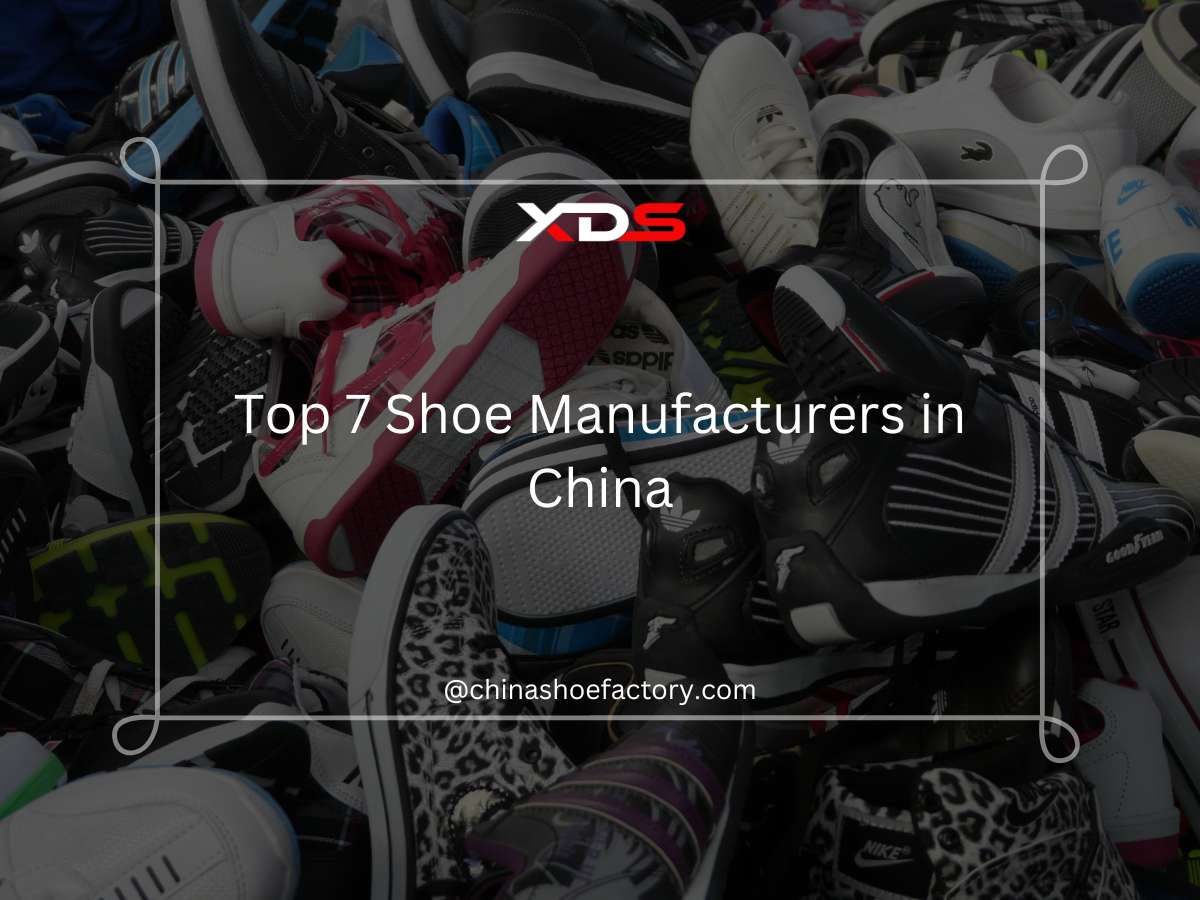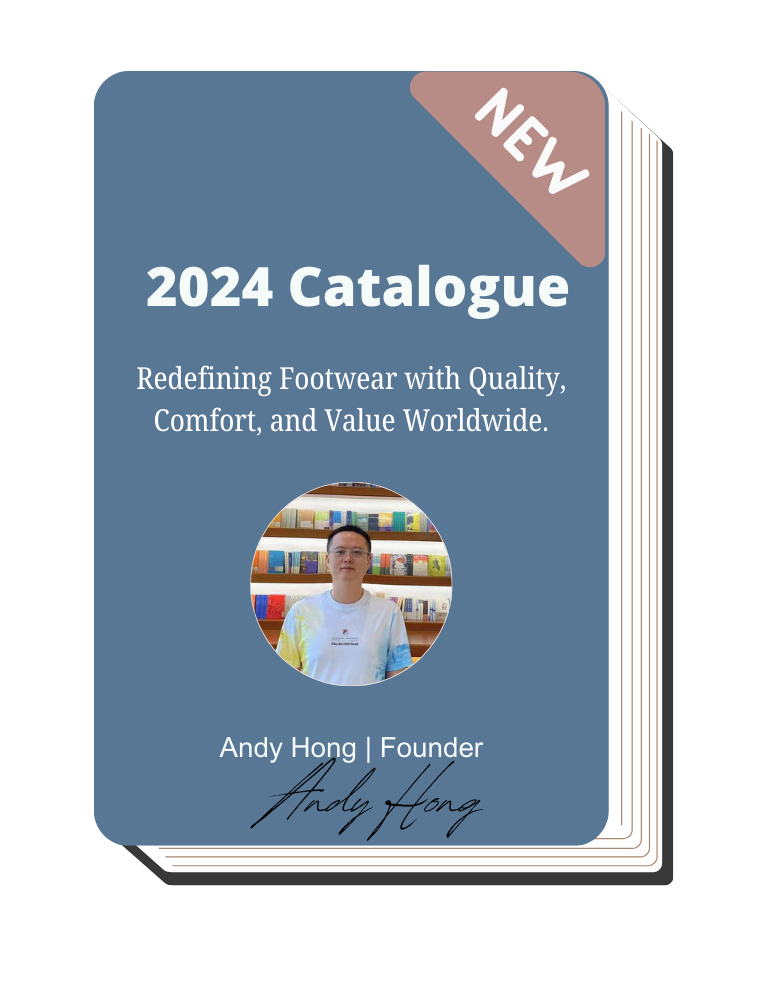15 Different Types of Sole Construction Techniques

Author: Andy Hong | Founder at XDS
Hi, I'm Andy Hong, here to share my expertise in footwear manufacturing with you.
15 Different Types of Sole Construction Techniques
Table of Contents
Ever wondered what the different types of sole construction techniques are? Knowing how soles are made can be the key to creating shoes that stand in the competitive footwear market.
As a footwear designer, I’ve helped countless business owners navigate the complexities of shoe construction. My goal is to share insights that empower you to elevate your brand and craft exceptional products.
Here is a preview of 2 of the best type of sole construction techniques:
- Cemented Construction
- Goodyear Welt Construction
In this guide, you’ll discover 15 different types of sole construction techniques, exploring its advantages, disadvantages, and ideal applications, so you can confidently choose what works best for your products.
Keep reading to learn more!
1. Quick Comparison Chart
Understanding sole construction techniques can help footwear manufacturers and business owners make informed decisions for specific shoe designs. Below is a table offering a quick look at 15 construction techniques and their key features, giving you a glimpse before diving into the details of each method:
| Construction Technique | Best For | Key Benefits |
| Cemented Construction | Casual and athletic footwear | Lightweight, affordable, flexible |
| Goodyear Welt Construction | Premium dress and work shoes | Durable, repairable, water-resistant |
| Blake Stitch Construction | Formal and casual slim-profile shoes | Sleek design, lightweight, flexible |
| Direct Injection Molding | Outdoor and work footwear | Durable, waterproof, shock-absorbent |
| Vulcanized Construction | Casual and skate shoes | Flexible, durable, weather-resistant |
| Strobel Construction | Athletic and casual footwear | Lightweight, flexible, breathable |
| Opanka Construction | Handmade artisan footwear | Flexible, breathable, fast break-in time |
| Norwegian Welt Construction | Outdoor and premium rugged shoes | Water-resistant, long lifespan, insulated |
| California Construction | Lightweight casual footwear | Personalized fit, quiet steps, affordable |
| San Crispino Construction | Rugged outdoor footwear | Weather-resistant, durable, secure bond |
| Injection Molded EVA | Athletic and casual footwear | Lightweight, cushioned, eco-friendly |
| Turned Construction | Soft, flexible footwear | Seamless finish, quick break-in, aesthetic |
| Moccasin Construction | Casual, heritage-inspired shoes | Flexible, culturally appealing, repairable |
| Storm Welt Construction | Heavy-duty outdoor footwear | Water-resistant, durable, versatile |
| Combination Construction | High-performance or custom shoes | Versatile, tailored features, thermal regulation |
2. Cemented Construction
Cemented construction, also called direct attachment, is one of the most common sole construction techniques used in the footwear industry. This technique is popular for its simplicity, speed, and cost-effectiveness, making it ideal for various types of shoes.
Materials Used
- Adhesives: High-strength adhesives are the key material used to bond the upper and sole together. These adhesives are designed to provide a secure and long-lasting bond.
- Rubber Soles: Rubber is often used for its flexibility, durability, and ability to provide excellent traction.
- Synthetic Uppers: Lightweight and cost-effective synthetic materials are commonly used for the upper, making the shoe versatile and affordable.
- Foam or EVA (Ethylene Vinyl Acetate): These materials are sometimes added for cushioning and comfort in the midsole.
- Leather or Fabric Linings: Used for the inner layer of the shoe to enhance comfort and improve the overall finish.
Benefits
- Enhanced Versatility: This technique is compatible with various materials, enabling manufacturers to create diverse styles and designs.
- Improved Lightweight Design: Cemented shoes are lighter due to the absence of heavy stitching or additional layers, making them easy to wear.
- Enhanced Affordability: This method is budget-friendly, allowing businesses to produce quality shoes at a lower manufacturing cost.
3. Goodyear Welt Construction
Goodyear welt construction is a traditional method known for its durability and craftsmanship. It involves stitching the upper, welt, and sole together, creating a long-lasting bond. This technique is highly valued in premium footwear for its ability to combine strength with repairability.
Materials Used
- Leather: Premium leather is often used for the upper, insole, and welt, providing durability and a classic appearance.
- Cork: Placed between the insole and outsole to enhance comfort by molding to the shape of the wearer’s foot over time.
- Thread: Strong, durable thread is used for stitching the welt to the upper and sole securely.
- Rubber or Leather Outsole: The outsole can be made of rubber for better grip or leather for a more refined look.
- Synthetic Welt (Optional): Some manufacturers use synthetic welts as a cost-effective alternative to leather while maintaining functionality.
Benefits
- Improved Durability: Goodyear welt construction creates a strong, lasting bond, making shoes suitable for heavy use and harsh conditions.
- Enhanced Repairability: The welt allows for easy replacement of the sole, extending the shoe’s lifespan significantly.
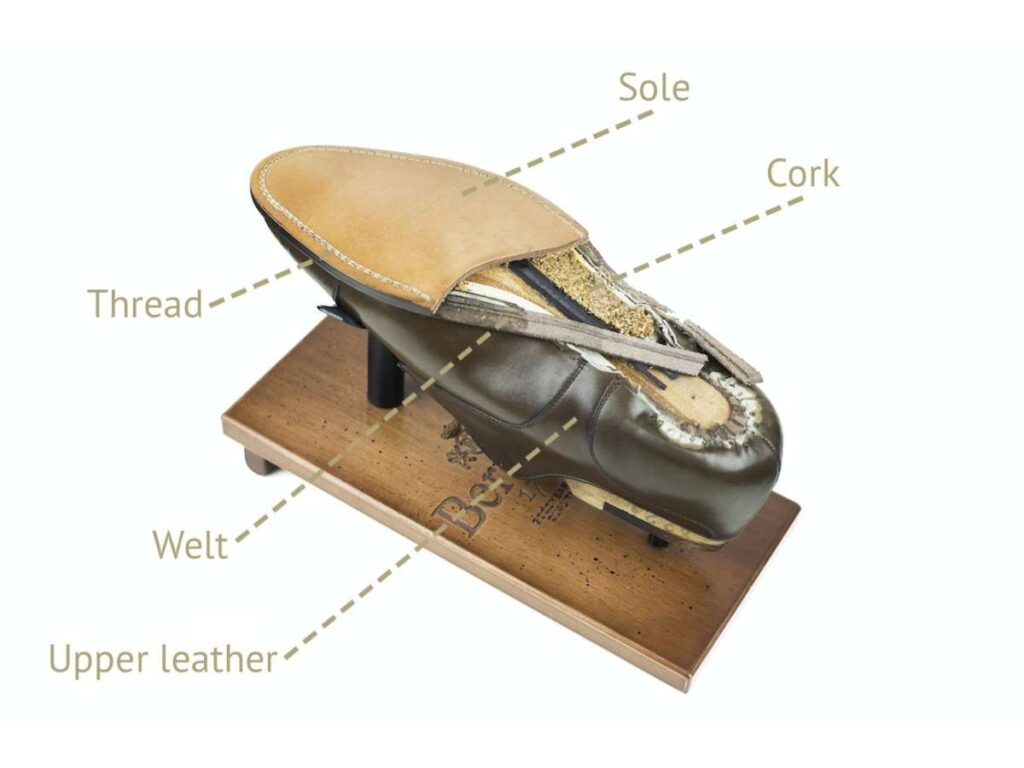
4. Blake Stitch Construction
Blake stitch construction is a popular technique in shoe manufacturing, particularly for lightweight and sleek footwear. This method involves stitching the upper, insole, and sole directly together. It is known for creating flexible, slim-profile shoes with a clean finish.
Materials Used
- Leather: Commonly used for both the upper and sole, providing durability and a sleek, stylish appearance.
- Synthetic Materials: Occasionally used for the sole, offering more affordability and versatility in design.
- Thread: High-strength thread is essential for stitching the sole, insole, and upper directly together for a secure bond.
- Cork or Foam Filling: Used to enhance comfort by providing cushioning between the insole and sole.
- Rubber Soles: Sometimes used for added flexibility and better grip, especially in casual or modern designs.
Benefits
- Improved Flexibility: Blake stitch construction allows for a closer bond between the sole and the upper, making shoes more flexible and comfortable to wear.
- Enhanced Sleek Design: The direct stitching method eliminates the need for an external welt, giving shoes a slim, modern appearance suitable for formal and casual styles.
- Faster Manufacturing Process: Compared to welted methods, Blake stitching requires fewer steps, supporting quicker production timelines without compromising quality.
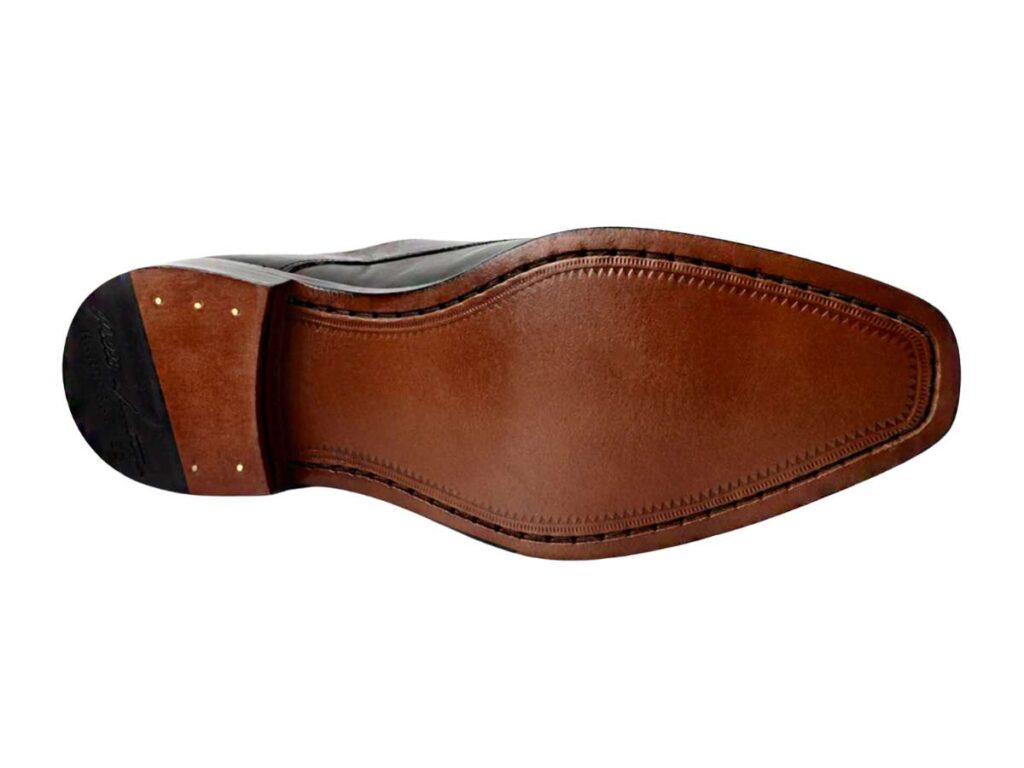
5. Direct Injection Molding
Direct injection molding is a modern technique used to create highly durable soles by directly injecting molten material onto the shoe upper. This method bonds the sole and upper seamlessly. It is commonly used for creating sturdy, waterproof shoes designed for heavy use.
Materials Used
- Thermoplastic Polyurethane (TPU): Commonly used for its excellent flexibility, durability, and resistance to wear and abrasion.
- Polyurethane (PU): Lightweight and shock-absorbent, ideal for creating comfortable and cushioned soles.
- Ethylene Vinyl Acetate (EVA): Used for lightweight soles with enhanced flexibility and comfort, perfect for athletic and casual footwear.
- Rubber: Often used for durable soles that offer great grip and traction, suitable for outdoor and work footwear.
- Synthetic Upper Materials: Compatible with the injected sole materials, ensuring a strong bond during the molding process.
Benefits
- Improved Waterproofing: Direct injection molding eliminates gaps, creating a sealed structure that keeps water out effectively, ideal for outdoor and work footwear.
- Better Shock Absorption: The technique allows for the use of cushioning materials that improve comfort and reduce impact during wear.
- Reduced Stitching Needs: Since the sole is directly bonded, there is minimal reliance on stitching, enhancing the shoe’s overall flexibility and design options.
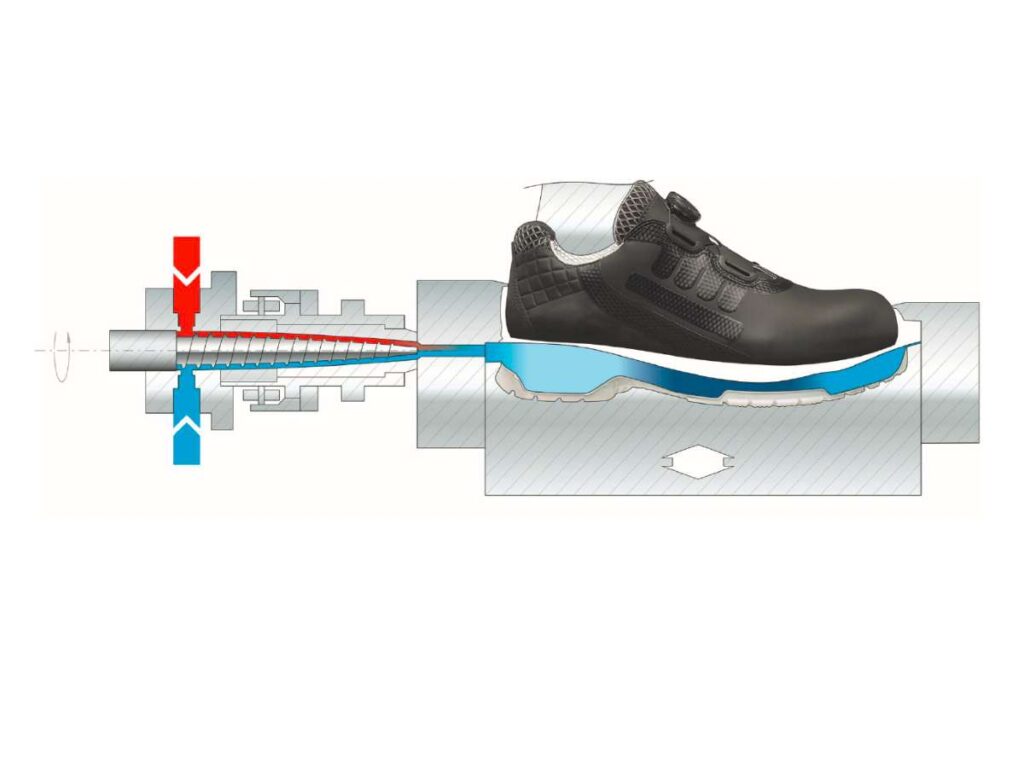
6. Vulcanized Construction
Vulcanized construction is a popular technique for making casual and athletic footwear. It involves bonding the shoe’s upper and sole through heat and pressure, using a rubber layer. This method is widely known for creating durable, flexible, and stylish shoes.
Materials Used
- Natural or Synthetic Rubber: The primary material used for the sole, which undergoes the vulcanization process to become durable and flexible.
- Canvas or Fabric Uppers: Commonly used for the upper part of the shoe, providing a lightweight and breathable structure.
- Adhesives: Specialized glues or bonding agents are applied to ensure a secure bond between the upper and rubber sole before vulcanization.
- Sulfur or Accelerators: Added during the vulcanization process to strengthen the rubber and enhance its elasticity.
- Reinforcement Materials: Additional rubber or fabric strips are used for extra durability and style, especially around the shoe’s edges or toe areas.
Benefits
- Improved Heat and Weather Resistance: The vulcanization process creates rubber soles that excel in various temperatures and weather conditions, enhancing the shoes’ adaptability. For example, if the shoes are exposed to extreme heat or heavy rainfall, the vulcanized rubber maintains its durability and performance.
- Enhanced Grip and Traction: Vulcanized soles provide superior grip, making them ideal for activities like skateboarding or walking on slippery surfaces.
- Improved Eco-Friendly Potential: Vulcanized rubber can be made from sustainable materials, contributing to environmentally conscious footwear options.
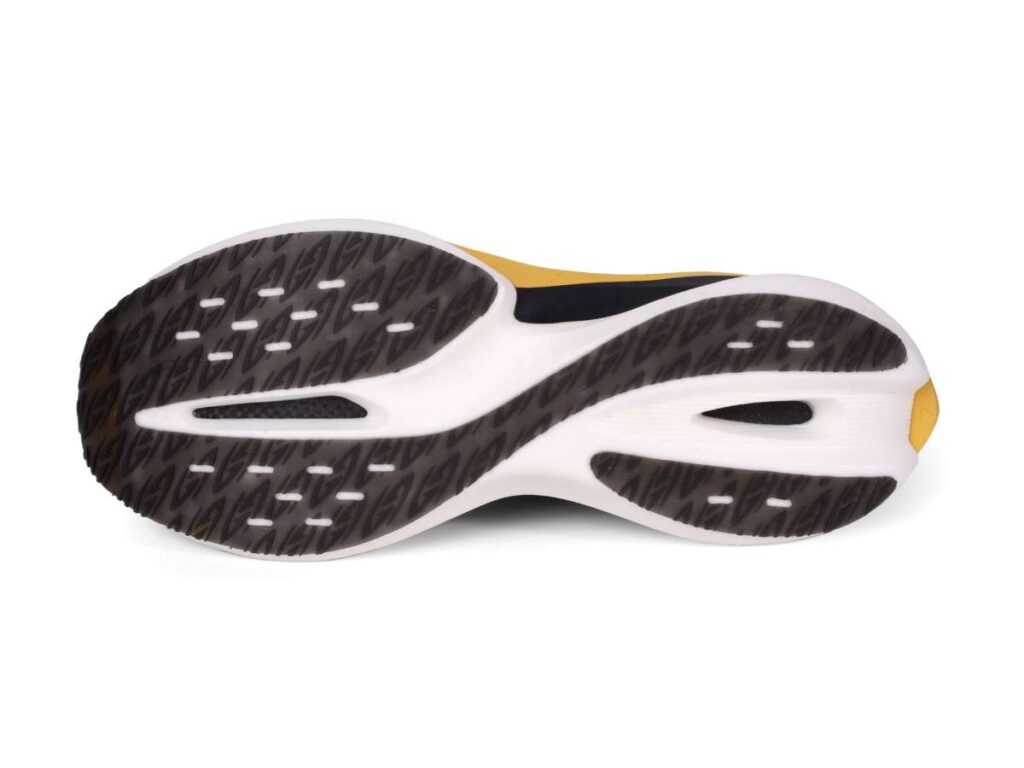
7. Strobel Construction
Strobel construction is a widely used technique in athletic and casual footwear manufacturing. It involves stitching the upper directly to a fabric insole board, creating a flexible and lightweight shoe. This method is popular for its ability to enhance comfort and reduce the overall weight of the footwear.
Materials Used
- Fabric Insole Board: A lightweight and flexible base material stitched directly to the upper, enhancing flexibility and structure.
- Synthetic or Mesh Uppers: These materials are commonly used for breathability and reducing the overall weight of the shoe.
- Foam or EVA (Ethylene Vinyl Acetate): Often added in the midsole to improve cushioning and comfort during use.
- Strong Thread: High-quality thread is used to stitch the upper to the insole board securely.
- Rubber or Synthetic Soles: These soles are chosen for their grip, durability, and lightweight properties, complementing the Strobel construction technique.
Benefits
- Improved Flexibility: Strobel construction allows the shoe to bend naturally with the foot, making it ideal for athletic and casual footwear.
- Better Comfort: This method accommodates additional cushioning materials, enhancing the wearer’s experience, especially during prolonged use.
- Increased Breathability: The materials used in Strobel construction, such as mesh uppers, enhance air circulation, keeping the wearer’s feet cool and comfortable.

8. Opanka Construction
Opanka construction is a traditional shoe-making technique known for its craftsmanship and durability. It involves stitching the upper, insole, and outsole together in a single process. This method creates a flexible, durable, and visually appealing shoe design, often associated with handmade or artisan footwear.
Materials Used
- Full-Grain Leather: Often used for the upper, providing durability, breathability, and a premium appearance.
- Sturdy Thread: High-quality thread is essential for securely stitching the upper, insole, and outsole together.
- Flexible Leather or Rubber Soles: These materials provide comfort and durability while maintaining flexibility in the shoe.
- Soft Insole Materials: Leather or cushioned insole materials enhance comfort for extended wear.
- Decorative Stitching Materials: Used to add a distinctive design element, highlighting the handmade quality of Opanka shoes.
Benefits
- Increased Breathability: The stitching method allows for natural air circulation, keeping the feet cool and comfortable during wear.
- Faster Break-In Time: The flexible construction makes the shoes adapt quickly to the shape of the wearer’s feet, offering immediate comfort.
- Greater Resole Potential: The stitched construction makes it easier to replace the sole, extending the shoe’s lifespan.
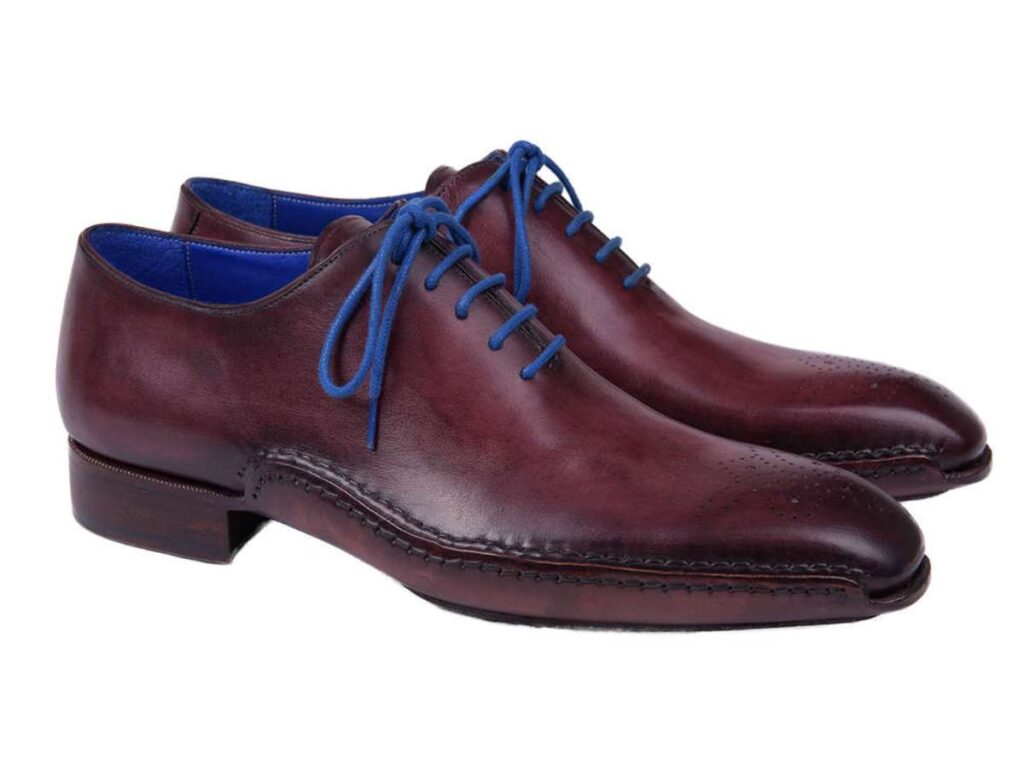
9. Norwegian Welt Construction
Norwegian welt construction is a traditional technique often used in premium and outdoor footwear. It involves double stitching the upper, welt, and sole together for extra durability. This method is known for its rugged design and exceptional water resistance, making it ideal for challenging environments.
Materials Used
- Full-Grain Leather: Used for the upper and welt, providing durability, water resistance, and a premium finish.
- Strong Thread: High-quality thread is essential for the double stitching that secures the layers together.
- Rubber or Leather Soles: Rubber soles offer traction and water resistance, while leather soles add a classic look for formal footwear.
- Cork Filling: Placed between the sole and insole to provide cushioning and added comfort.
- Wax or Sealant: Often applied to enhance water resistance and protect the stitching from moisture damage.
Benefits
- Enhanced Water Resistance: The layered construction and sealant protect the shoe from water penetration, ideal for wet and outdoor environments.
- Longer Lifespan: Norwegian welt construction allows for resoling, significantly extending the life of the shoe.
- Enhanced Insulation: The layered structure creates an insulating effect, keeping feet warmer in cold conditions.

10. California Construction
California construction, also known as slip-lasted construction, is a technique where the upper is sewn to an insole board and then attached to the sole. This method creates lightweight and flexible shoes, often used for casual and athletic footwear.
Materials Used
- Fabric or Leather Uppers: Provides flexibility and breathability, making the shoes lightweight and comfortable for extended wear.
- Fabric or Synthetic Insole Boards: These form the base of the shoe, offering stability and support without adding excessive weight.
- EVA or Foam Midsoles: Adds cushioning for enhanced comfort during activities.
- Rubber or Synthetic Soles: Provides durability and grip, ideal for casual or athletic use.
- Thread: Used to sew the upper and insole board together securely.
Benefits
- Better Fit Adaptability: The flexible upper construction adapts to different foot shapes, providing a more personalized and comfortable fit.
- Quiet Footsteps: The lightweight design and softer materials reduce noise, making it ideal for environments requiring quiet movement.
- Affordable Customization: California construction supports simple design adjustments, making customization more affordable to suit various customer preferences. For example, if a customer wants a specific color, material, or pattern, these changes can be implemented without significantly increasing production costs.
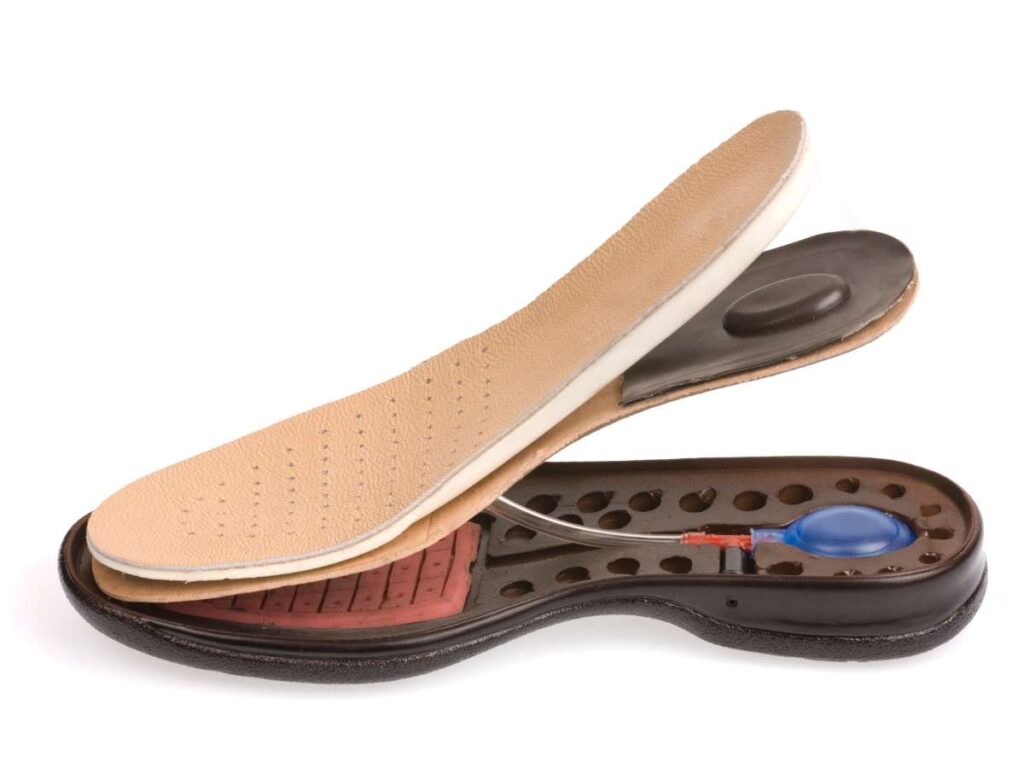
11. San Crispino Construction
San Crispino construction is a traditional shoe-making method known for its durability and craftsmanship. The upper is wrapped and stitched to the insole, creating a secure and strong bond. This method is commonly used for rugged and outdoor footwear due to its ability to handle tough conditions.
Materials Used
- Full-Grain Leather Uppers: Provides strength and durability while maintaining a premium look, ideal for long-lasting shoes.
- Heavy-Duty Thread: Used for stitching the upper to the insole, creating a secure and durable connection.
- Thick Leather or Rubber Outsoles: These materials offer excellent grip and wear resistance, perfect for rugged environments.
- Cork or Foam Insole Fillings: Adds comfort by providing cushioning and adapting to the shape of the foot over time.
- Wax or Sealants: Applied to protect the stitching and materials from moisture, enhancing longevity.
Benefits
- Better Weather Resistance: The sealed stitching and durable materials provide protection against moisture, making the shoes reliable in various weather conditions.
- Reduced Material Waste: The precise stitching process minimizes excess material use, supporting more sustainable manufacturing practices.
- Greater Sole Retention: The insole and outsole are securely attached, reducing the risk of delamination over time, even under heavy use.
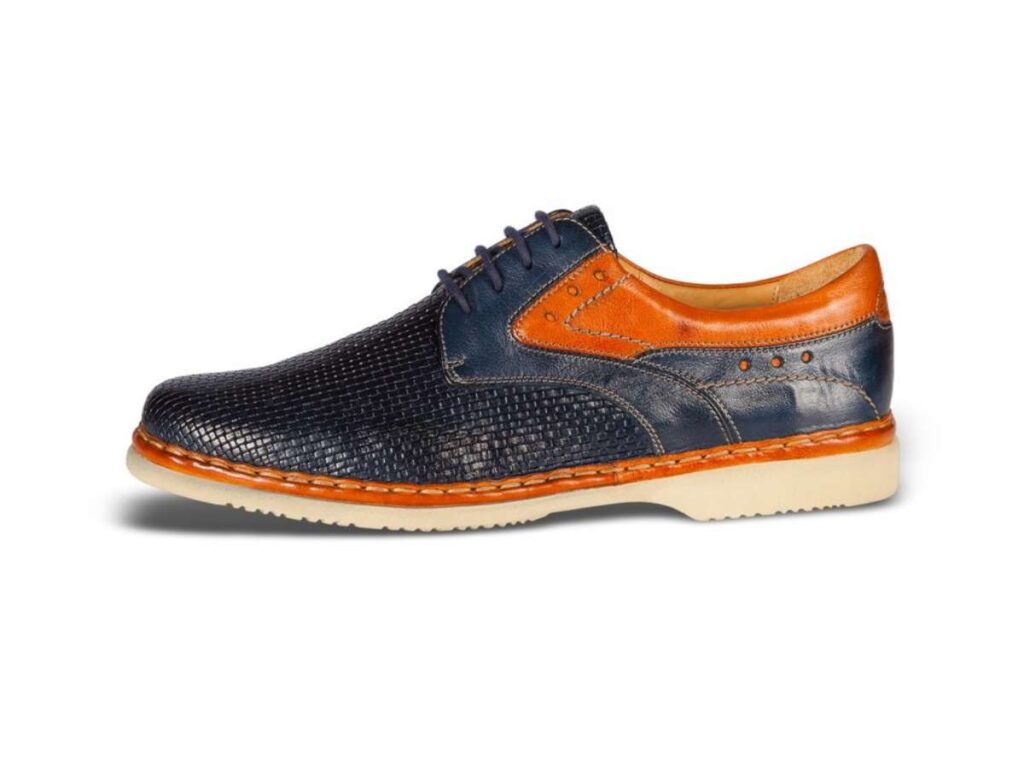
12. Injection Molded EVA
Injection molded EVA (Ethylene Vinyl Acetate) is a popular technique for creating lightweight, durable, and cushioned shoe soles. This process involves injecting molten EVA material into molds, forming flexible and shock-absorbent soles. It is widely used in athletic and casual footwear for its excellent performance and comfort.
Materials Used
- EVA (Ethylene Vinyl Acetate): The primary material, known for its lightweight, flexible, and shock-absorbing properties, ideal for various footwear applications.
- Additives for Enhanced Performance: Stabilizers and colorants are added to improve durability, visual appeal, and customization options.
- Heat-Resistant Mold Materials: Steel or aluminum molds are used to shape the EVA material, providing precise and consistent designs.
- Foaming Agents: These create the characteristic lightweight and soft texture of EVA soles, improving comfort and cushioning.
- Non-Slip Surface Coatings: Applied to enhance grip and safety, particularly in athletic and outdoor footwear.
Benefits
- Faster Production Speeds: The injection molding process significantly reduces production time, effectively meeting high market demands. If you’re a business owner seeking quick production times for every shoe, consider XDS.
- Temperature Stability: EVA maintains its flexibility and performance in a wide range of temperatures, suitable for different climates.
- Increased Color Versatility: EVA can be molded in a wide range of colors, making it suitable for vibrant and stylish footwear designs.
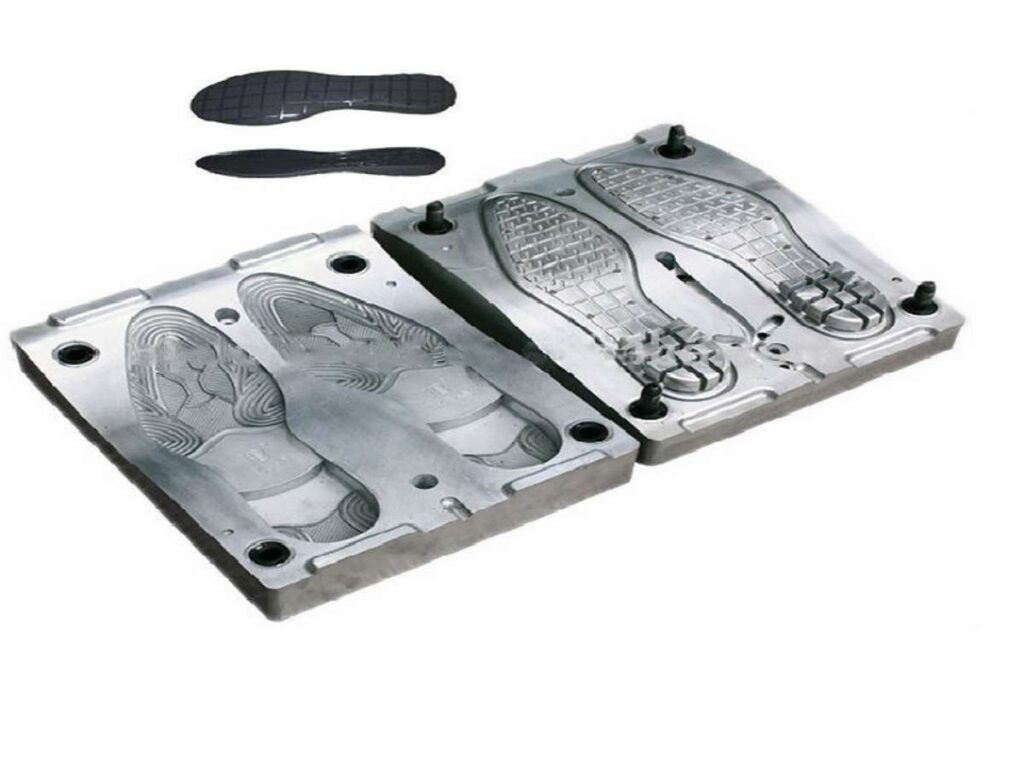
13. Turned Construction
Turned construction, also known as reverse construction, is a traditional method often used for soft and flexible shoes. The shoe is stitched inside out and then turned right side out, creating a seamless and smooth finish. This technique is popular for creating lightweight and comfortable footwear with a handcrafted feel.
Materials Used
- Soft Leather or Fabric Uppers: These materials are chosen for their flexibility, allowing the shoe to be turned inside out without damaging the structure.
- Durable Thread: High-strength thread is essential for creating secure seams during the stitching process.
- Flexible Outsoles: Rubber or leather soles are commonly used to provide durability while maintaining flexibility for comfort.
- Foam or Leather Linings: Adds softness and comfort, enhancing the shoe’s overall wearability.
- Adhesives (Optional): Sometimes used in addition to stitching to reinforce the bond between the upper and the sole.
Benefits
- Adaptable to Narrow Designs: Turned construction works well for creating slim-profile shoes without compromising comfort or durability.
- Quick Break-In Period: The soft construction method allows the shoe to mold to the foot quickly, providing immediate comfort.
- Enhanced Aesthetic Appeal: The smooth finish of turned construction adds a refined and polished look, ideal for both casual and formal footwear.
- Better for Sensitive Feet: The seamless interior makes this construction method ideal for individuals with sensitive skin or foot conditions.
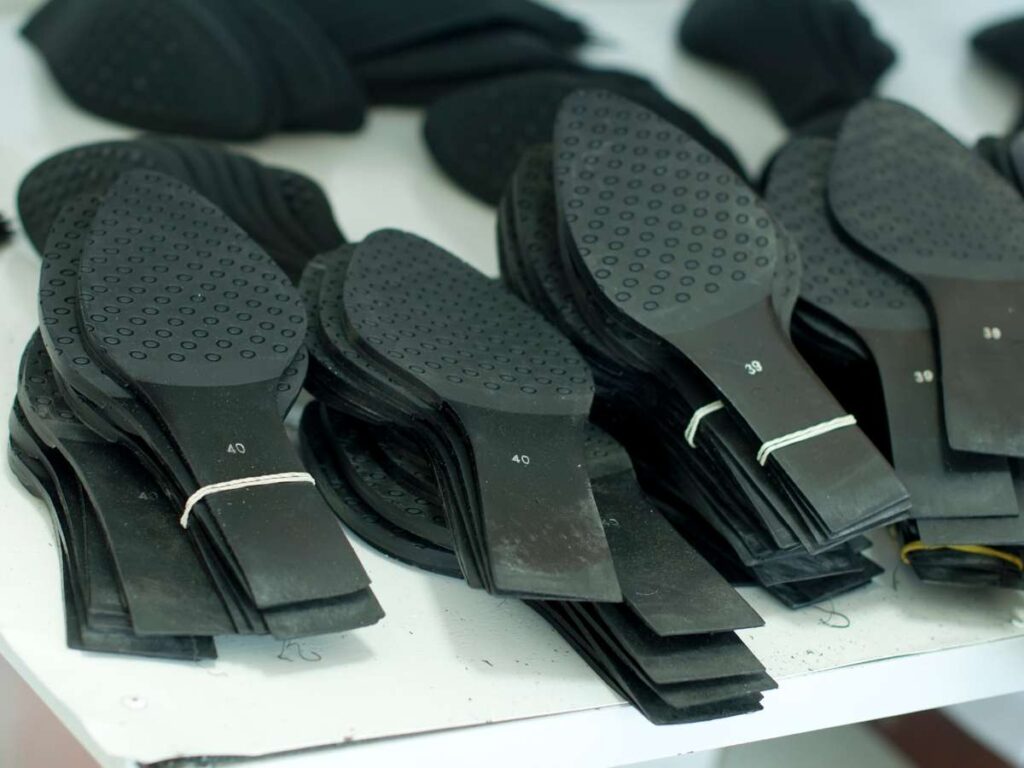
14. Moccasin Construction
Moccasin construction is a traditional shoe-making method rooted in Native American craftsmanship. It features a single piece of material wrapped around the foot, stitched to a sole. This technique creates flexible, lightweight shoes with a unique handmade appearance, ideal for casual and comfortable footwear.
Materials Used
- Soft Leather: Often used for the upper and sole, offering flexibility, durability, and a classic, natural look.
- Durable Thread: High-quality thread is essential for hand-stitching the upper and sole, ensuring a secure and long-lasting bond.
- Rubber Outsole (Optional): Sometimes added to enhance grip and durability while maintaining the traditional moccasin style.
- Foam Inserts: Provides additional cushioning for enhanced comfort, especially in modern moccasins.
- Decorative Materials: Beads, laces, or embroidery are often used to add unique, artistic details to the design.
Benefits
- Better Cultural Appeal: Moccasin construction connects with heritage and tradition, making it appealing to customers seeking authenticity.
- Quiet Footsteps: The soft leather and flexible design reduce noise, ideal for discreet movement.
- Easier to Repair: The simple construction allows for easy repairs, extending the life of the shoe and reducing waste.
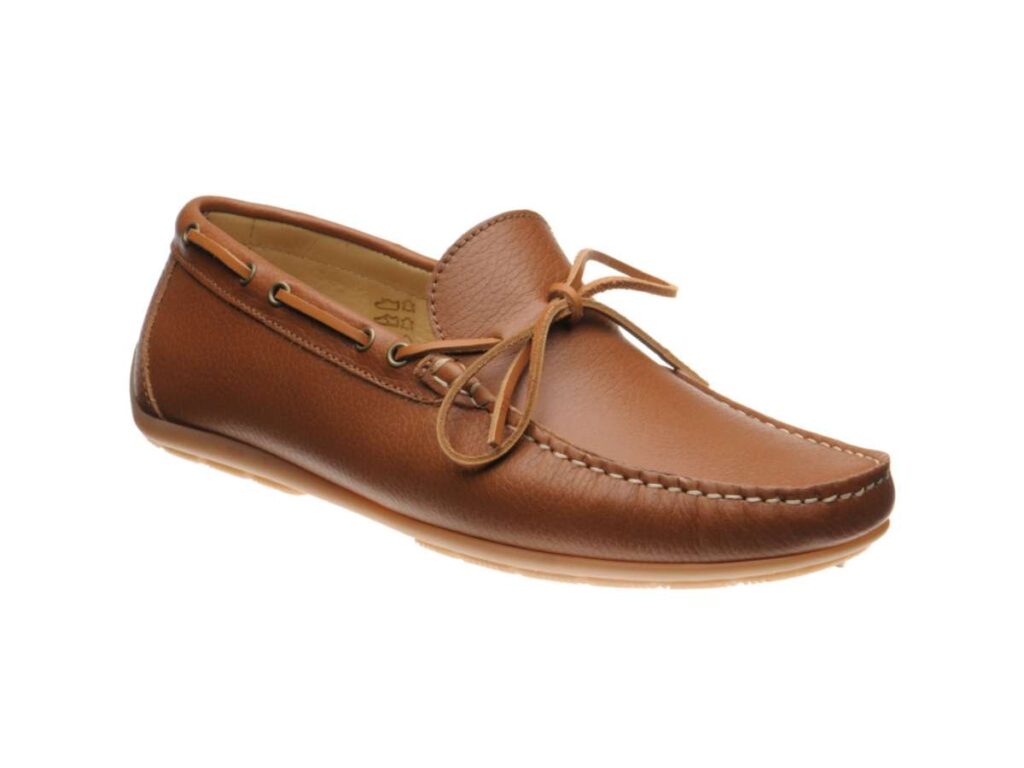
15. Storm Welt Construction
Storm welt construction is a variation of the Goodyear welt technique, designed to improve water resistance and durability. It features a raised edge on the welt that creates a tighter seal between the sole and the upper. This construction method is popular for outdoor and heavy-duty footwear.
Materials Used
- Leather Welts: High-quality leather is used to create the welt, which adds durability and water resistance while maintaining a classic look.
- Thick Leather or Rubber Soles: These soles provide excellent traction and are durable enough for rugged environments.
- Durable Thread: Strong thread is used for stitching, creating a secure bond between the welt, upper, and sole. At XDS, we guarantee that our shoes are crafted with durable thread to provide reliability and comfort.
- Water-Resistant Sealant: Applied to the welt stitching to enhance water resistance and prevent moisture from seeping into the shoe.
- Full-Grain Leather Uppers: This full-grain leather offers durability, breathability, and a premium finish for long-lasting footwear.
Benefits
- Reduced Stitch Damage: The raised welt protects the stitching from direct contact with external elements, increasing its durability.
- Adaptable for Work and Casual Use: The combination of durability and style makes storm welt construction versatile for both formal and rugged footwear.
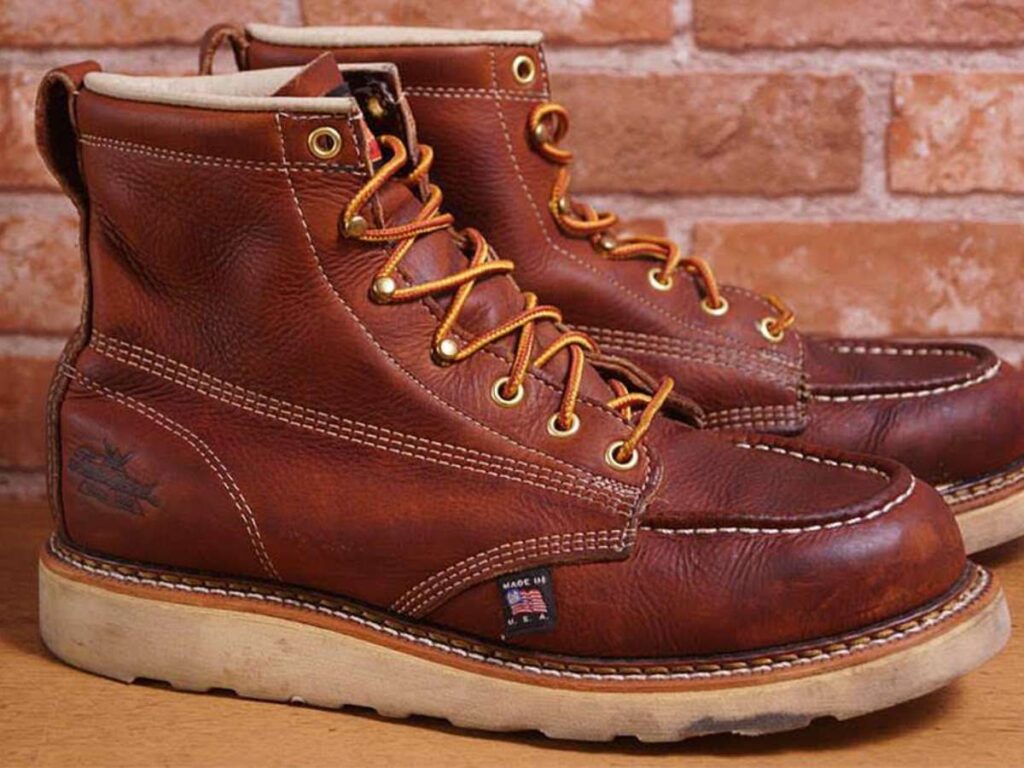
16. Combination Construction
Combination construction is a versatile shoe-making method that blends elements from two or more construction techniques. This approach allows manufacturers to leverage the strengths of each method to meet specific design and performance needs. It is often used in high-performance or custom footwear.
Materials Used
- Leather or Synthetic Uppers: Chosen for durability and flexibility, they adapt well to various construction techniques used in combination.
- Dual-Layer Soles: A mix of materials such as leather for aesthetics and rubber for grip and durability provides enhanced functionality.
- Durable Thread: High-strength thread is necessary for stitching different components together securely across construction methods.
- Cork or EVA Midsoles: Adds cushioning and support, combining the comfort of lightweight materials with the structure of more durable components.
- Specialized Adhesives: Used in areas where stitching is not applied, providing a strong bond for hybrid construction.
Benefits
- Better Performance Features: By integrating different methods, shoes can offer enhanced grip, flexibility, or weather resistance tailored to specific needs.
- Optimized Weight Distribution: Combination construction can integrate materials that evenly distribute weight, enhancing comfort during extended wear.
- Enhanced Thermal Regulation: Combining insulating materials with breathable components helps maintain a comfortable foot temperature in different climates.
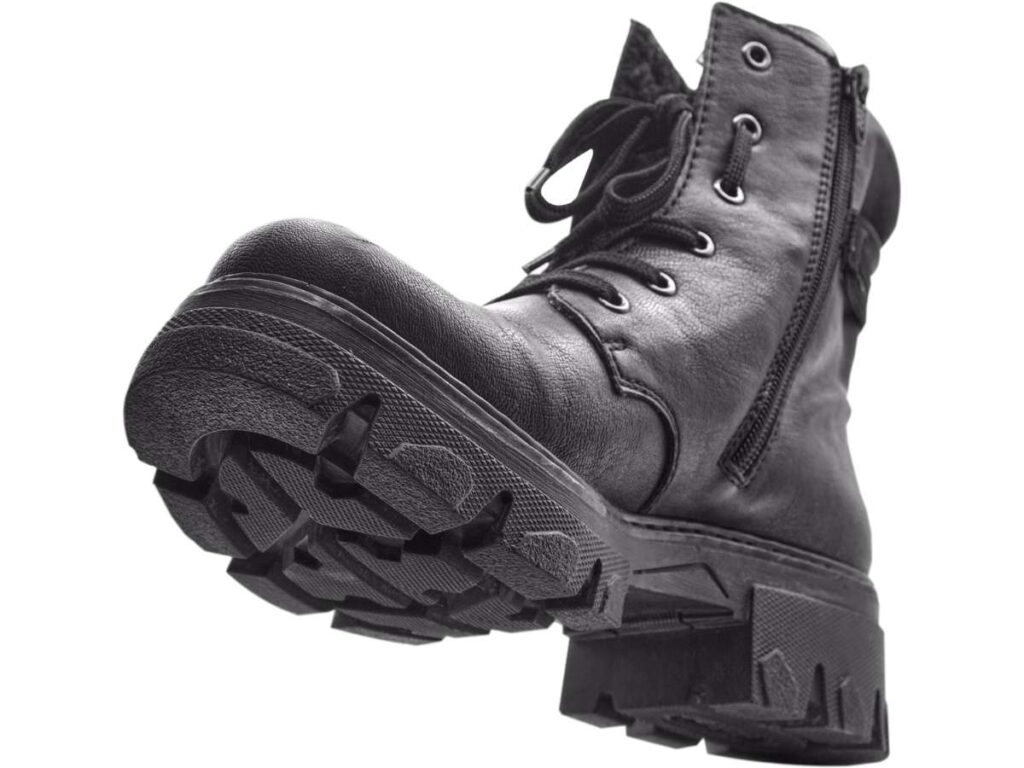
Conclusion
Finding a reliable manufacturer with low MOQs is a common challenge for growing footwear brands. At XDS, we make it easier by offering a minimum order of 500 pairs for select styles. Our flexible small production lines and frequent quality inspections allow us to accommodate new customers while maintaining exceptional standards.
We hope this guide on the 15 different types of sole construction techniques has provided you with valuable insights into choosing the right methods for your footwear needs. By partnering with XDS, you gain a trusted manufacturer dedicated to quality, customization, and helping your brand thrive. Contact us today to discuss how we can bring your footwear vision to life!
Explore More Helpful Resources
There’s more to explore! Check out our additional product selections to find exactly what you’re looking for:
For more in-depth knowledge, take a look at these recommended reads. We think you’ll find them useful:
- What are the Parts of a Boot Sole?
- Top 9 Shoe Heels and Soles Suppliers
- Top 8 Shoe Sole Material Suppliers
- Top 9 Shoe Sole Leather Suppliers
Still haven’t found what you’re looking for? Don’t hesitate to contact us; we’re available around the clock to assist you.
Quick Quote
Fill out the form, get the quote in hours!

